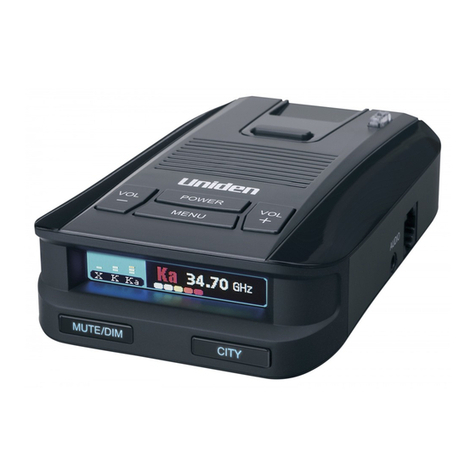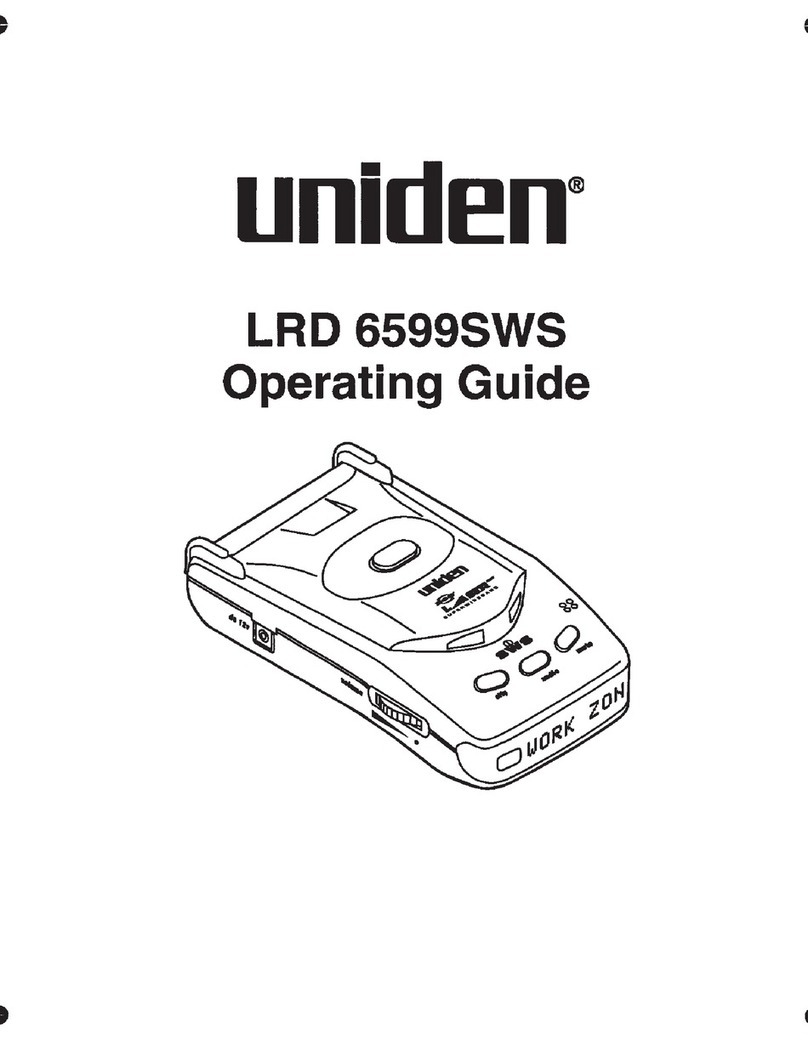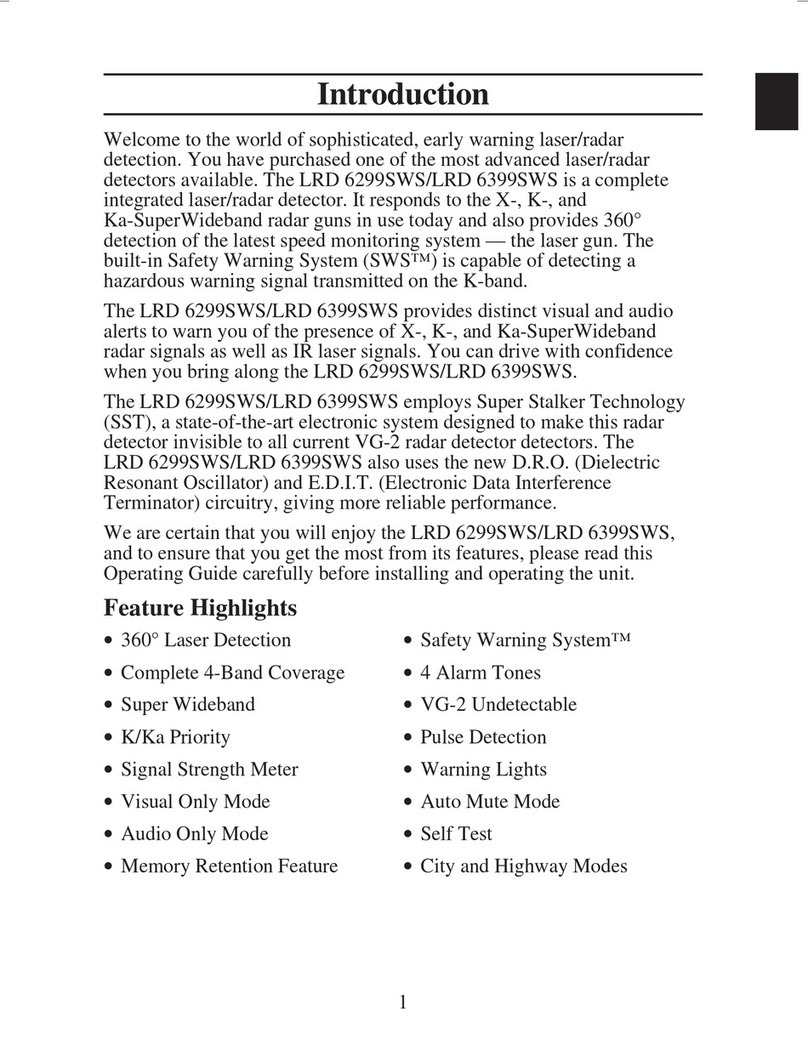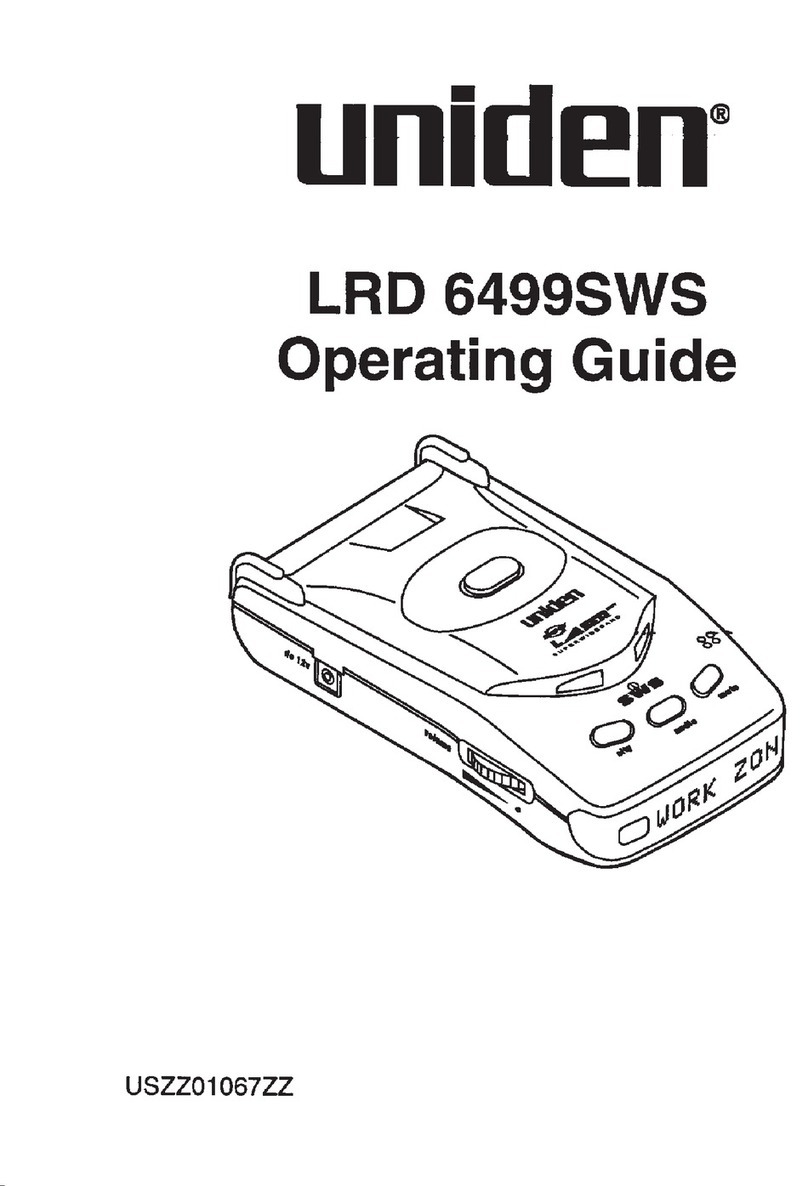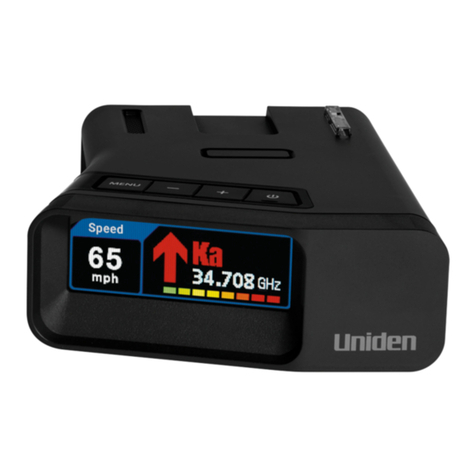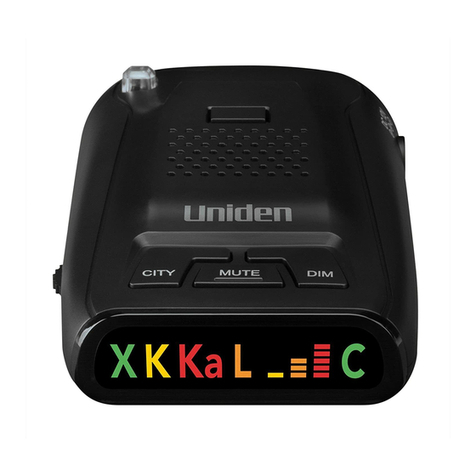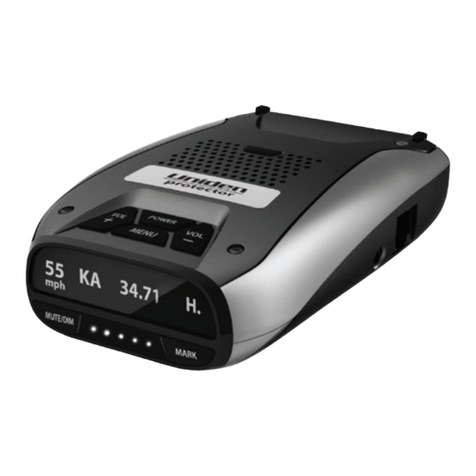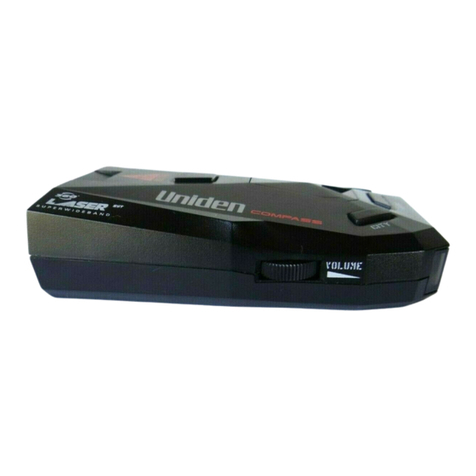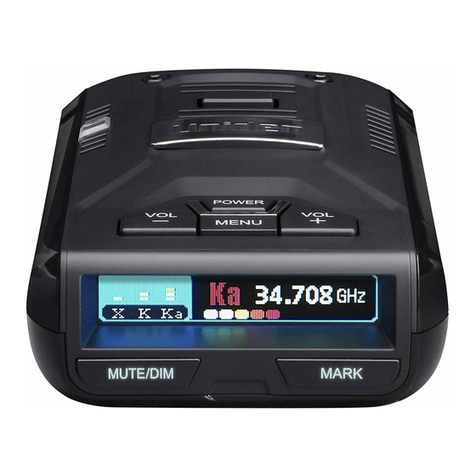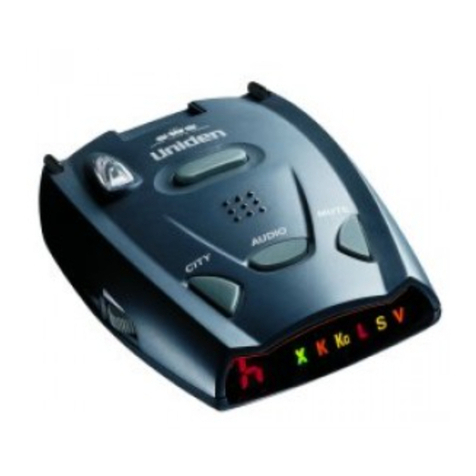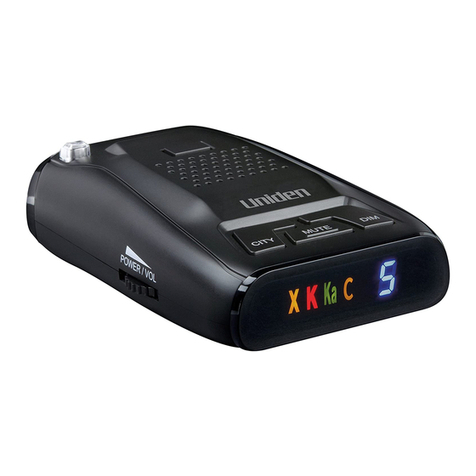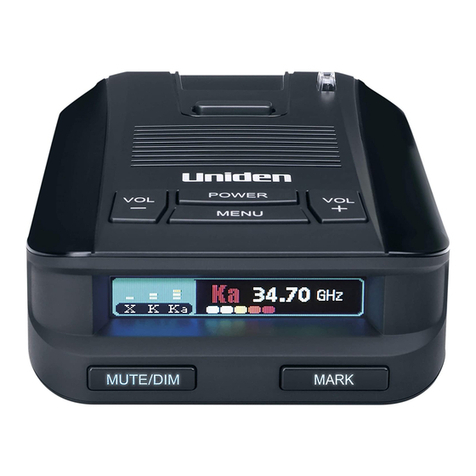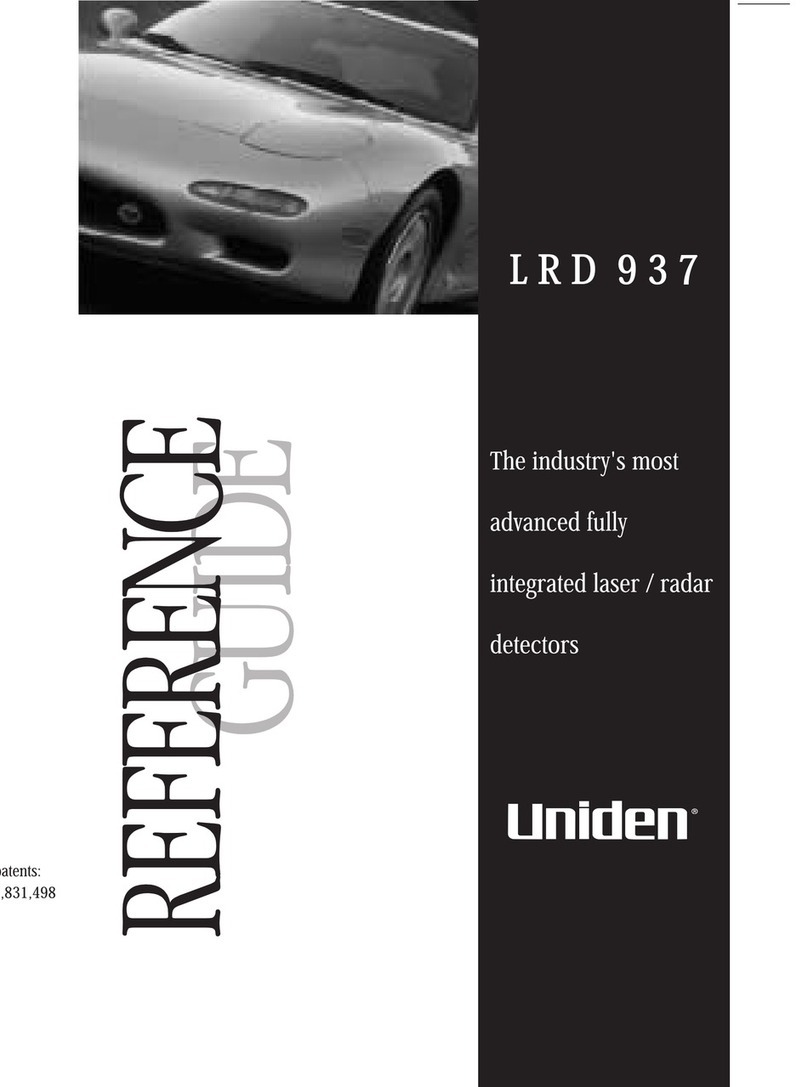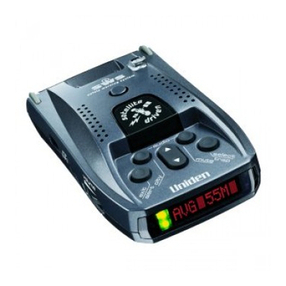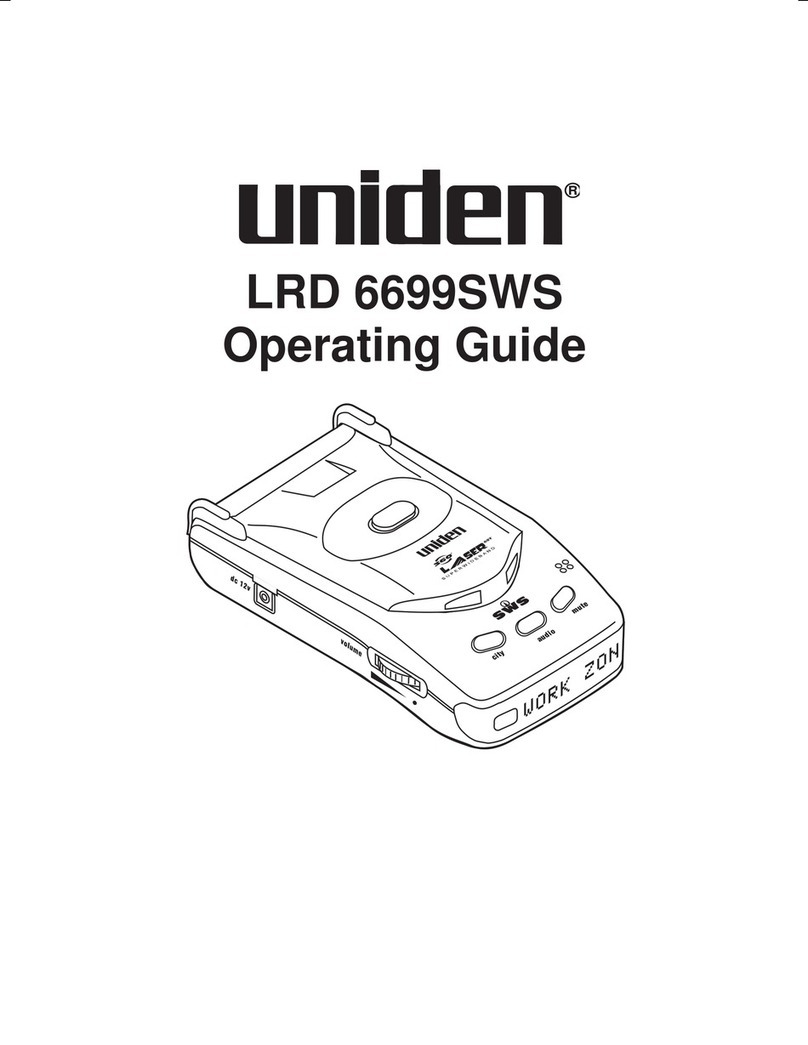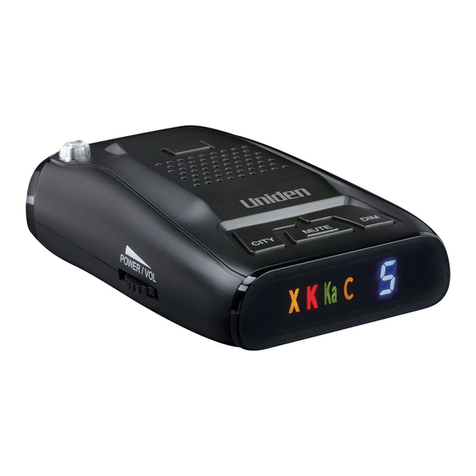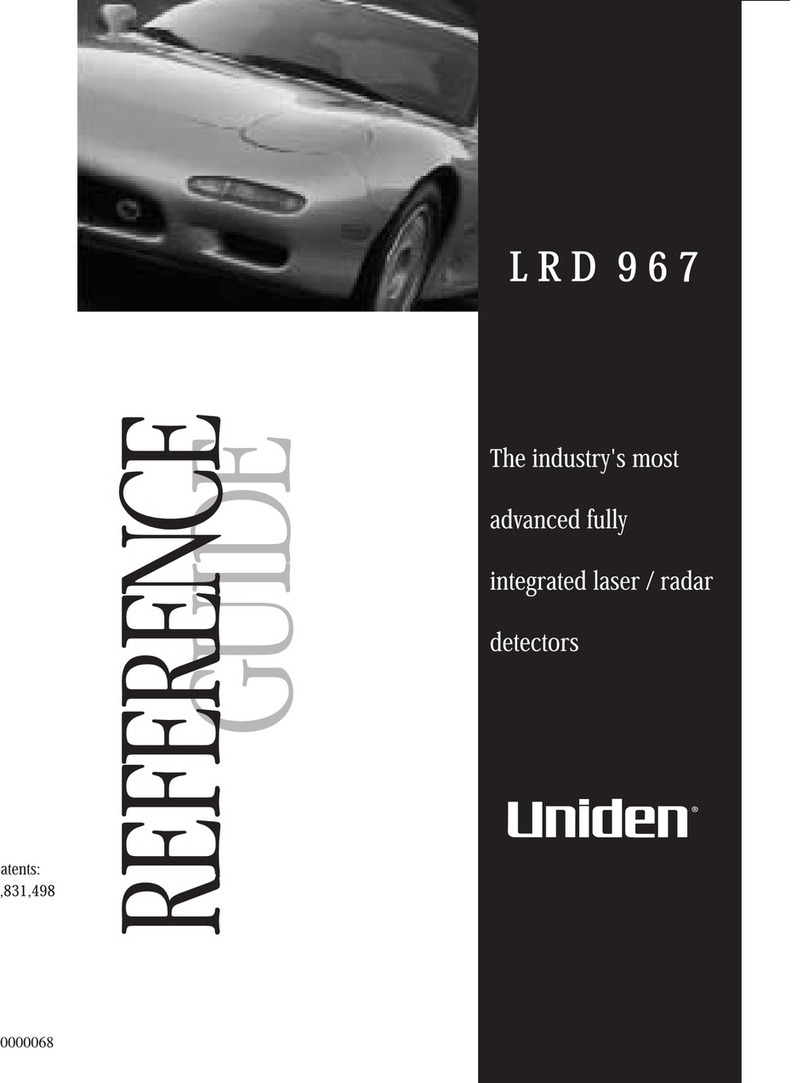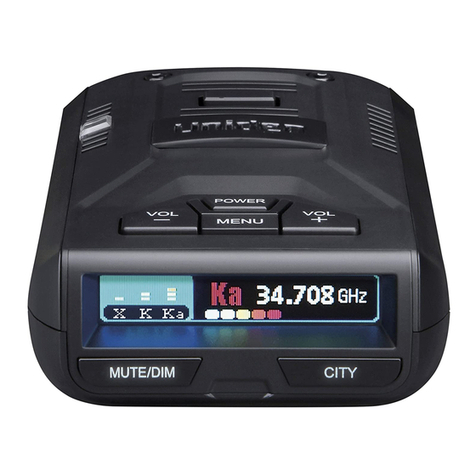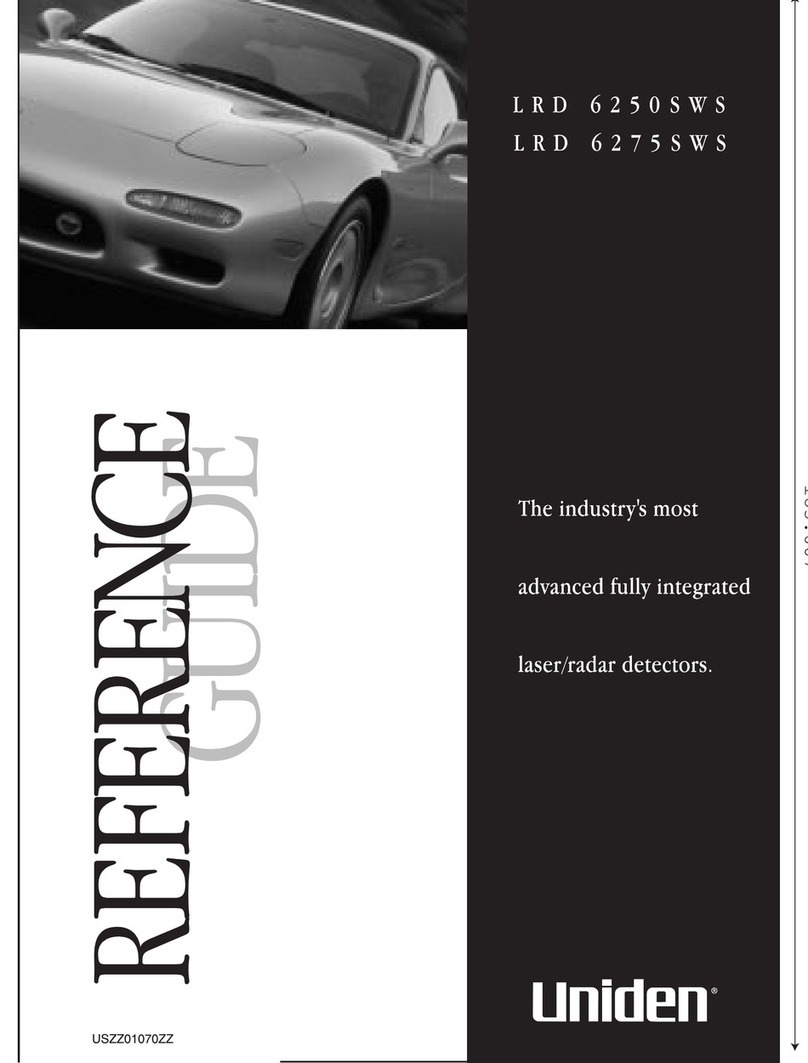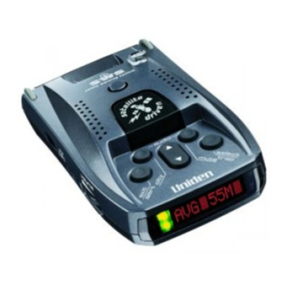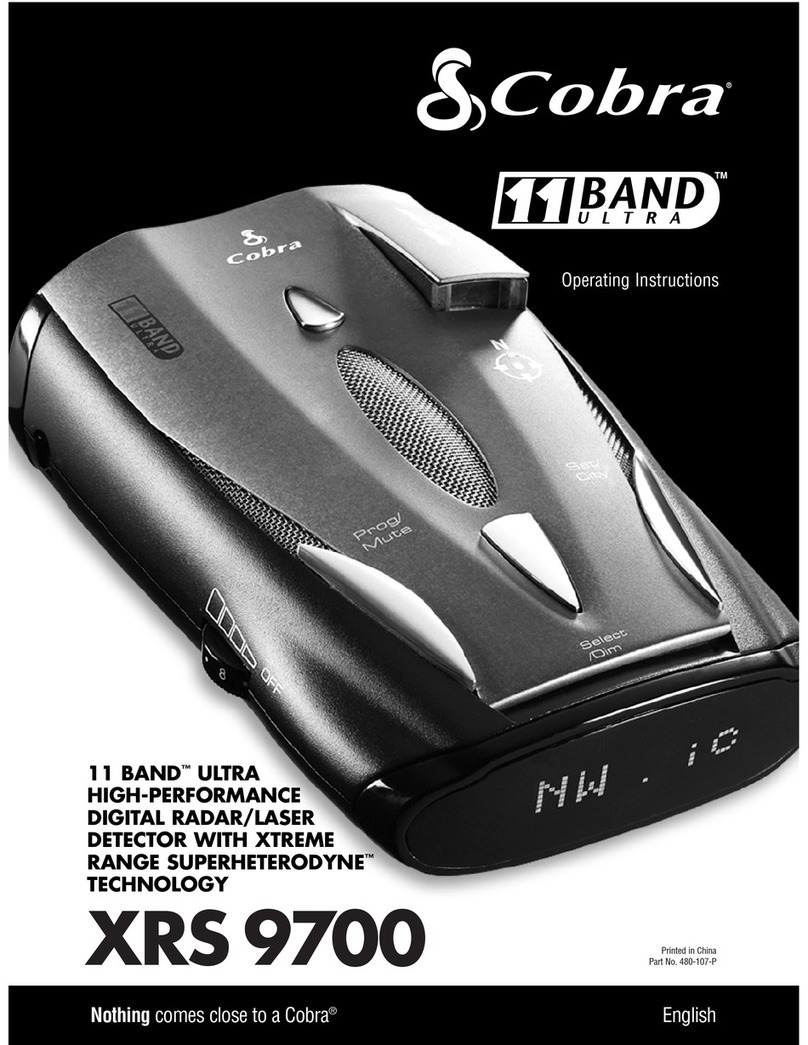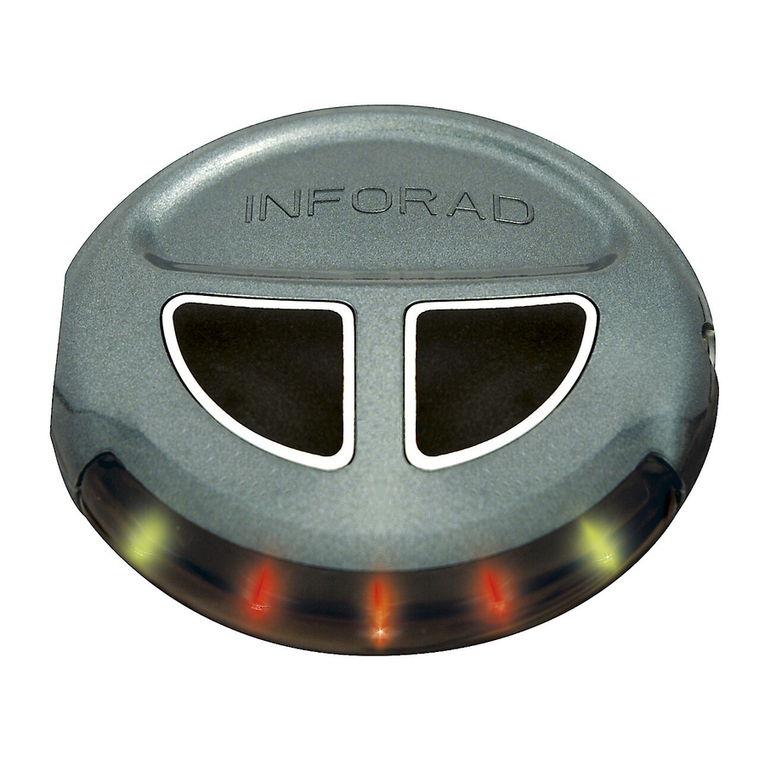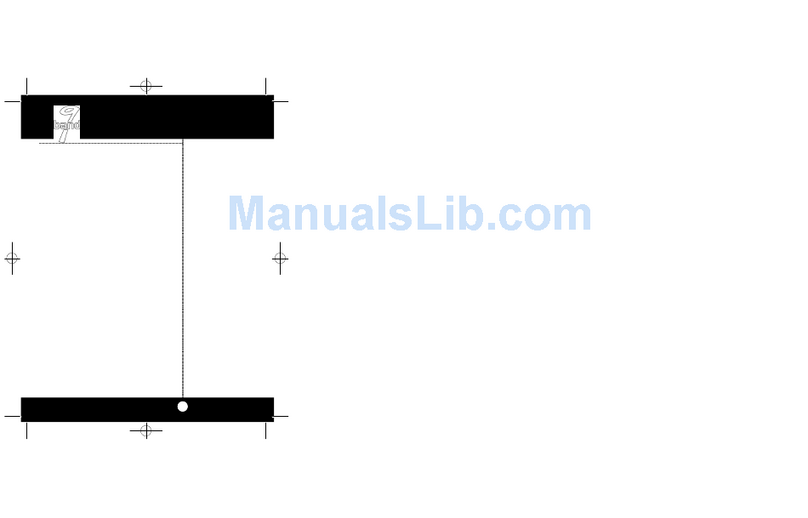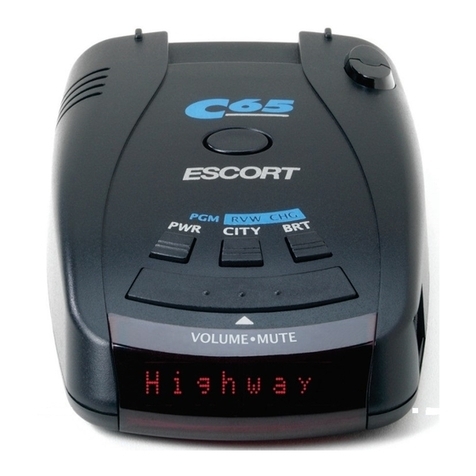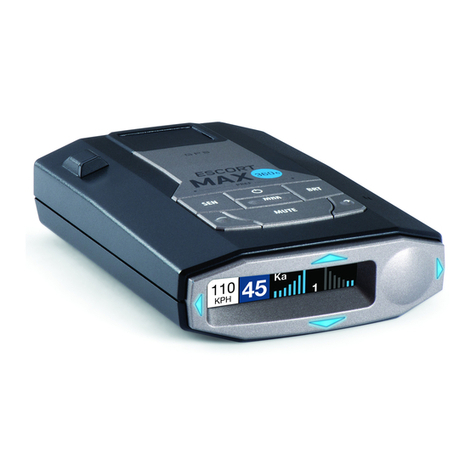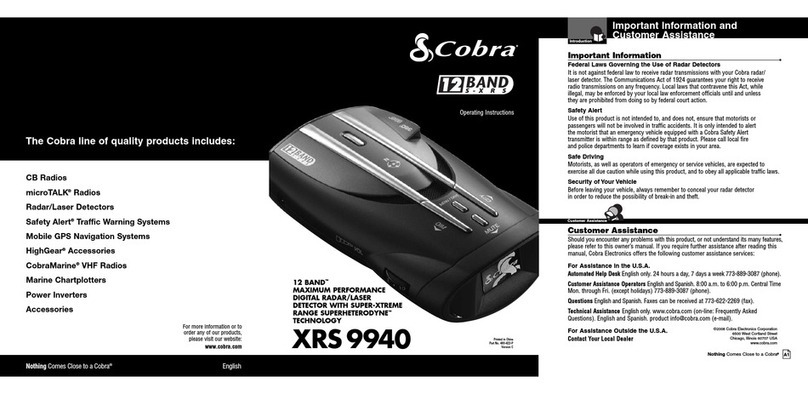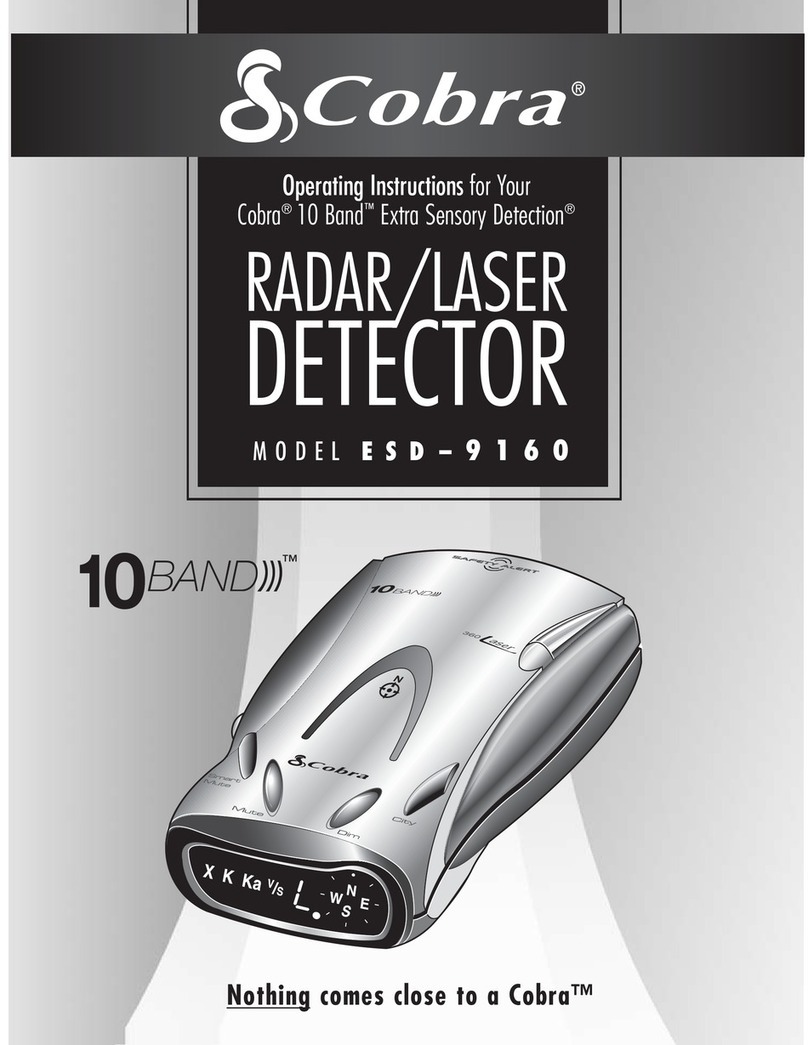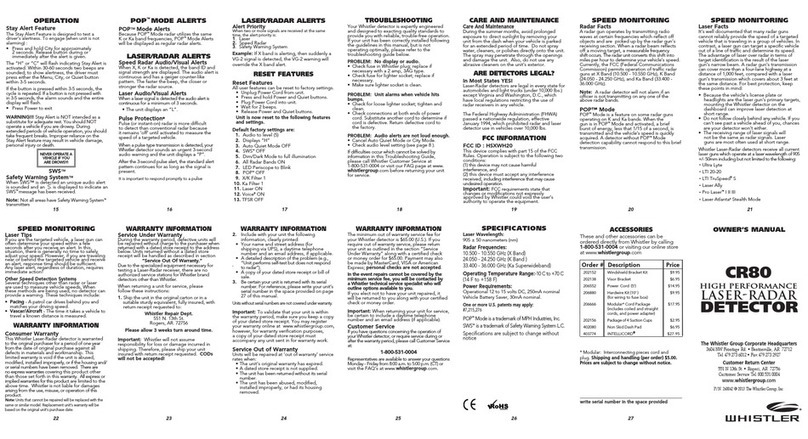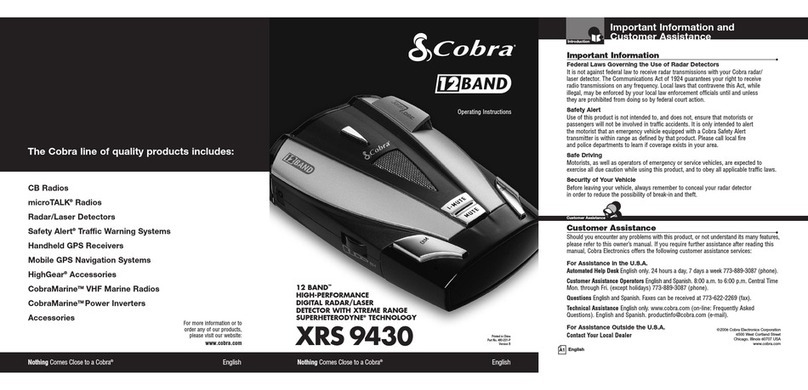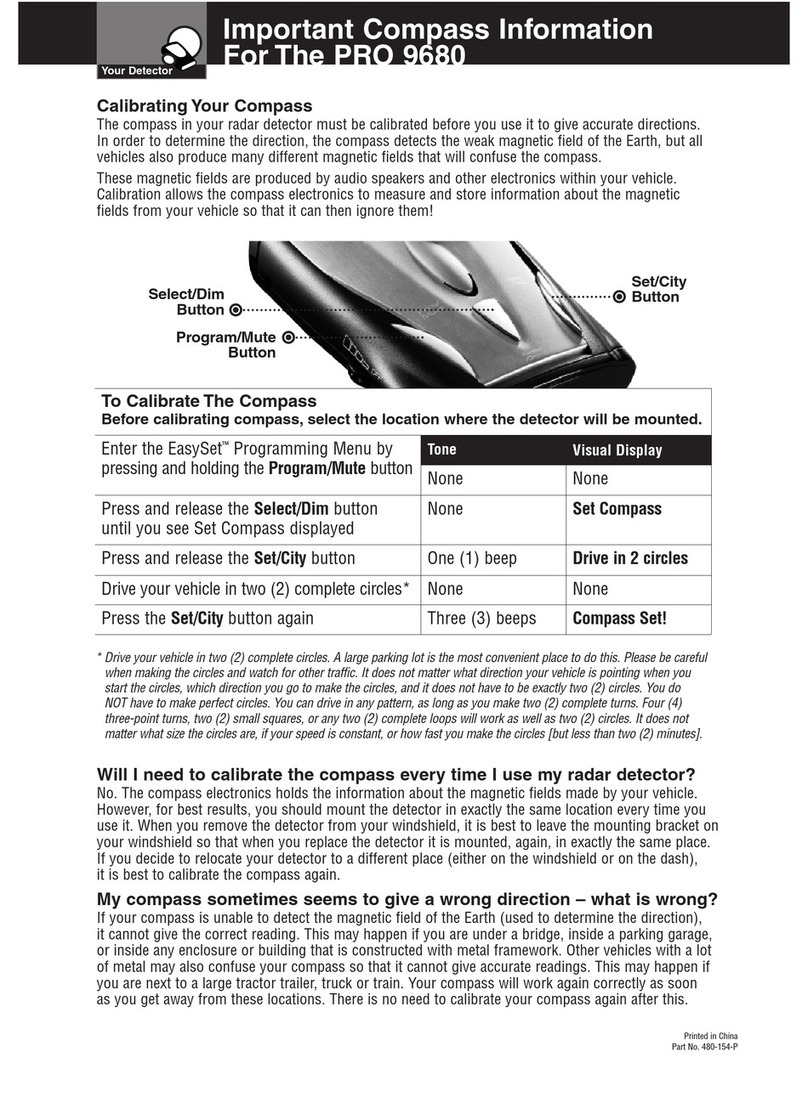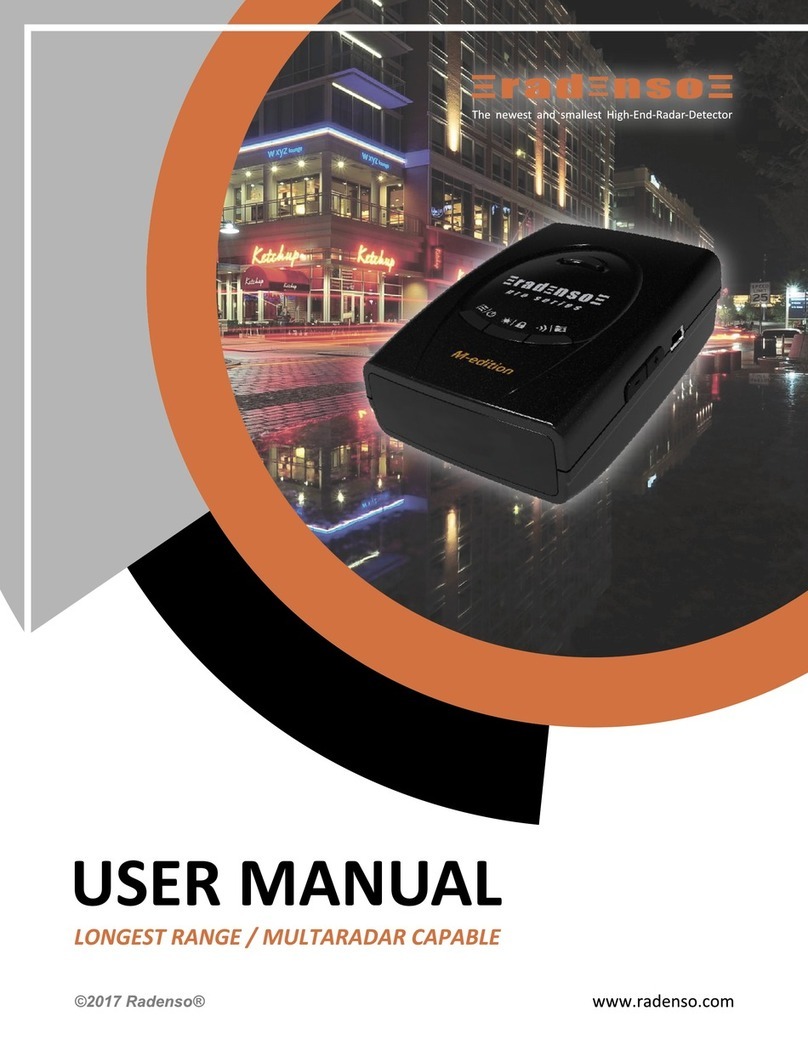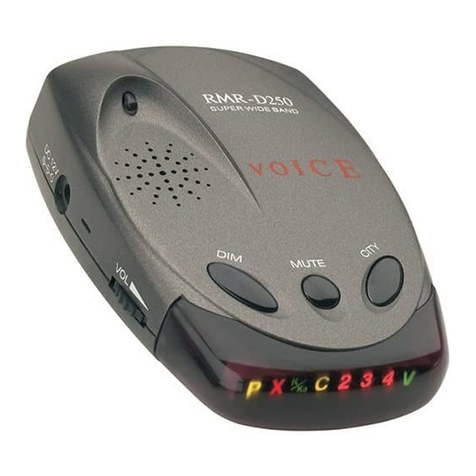
==.... -.-- ' -_.
Contents
Introduction. . . . . . . . . . . . . . . . . . . . . . . . .. . . . . . . . . . . . . . . . . . . . . . . 1
Feature Highlights. . . . . . . . . . . . . . . . . . . . . . . . . . . . . . . . . . . . . . . 1
Speed Detection Systems. . . . . . . . . . . . . . . . . . . . . . . . . . . . . . . . . . . . . 2
Radar. . . . . . . . . . . . . . . . . . . . . . . . . . . . . . . . . . . . . . . . . . . . . . . . . 2
Laser. .................................................3
Included with Your Radar Detector. . . . . . . . . . . . . . . . . . . . . . . . . . . . . 4
Controls and Functions. . . . . . . . . . . . . . . . . . . . . . . . . . . . . . . . . . . . . . .5
LED Displays. . . . . . . . . . . . . . . . . . . . . . . . . . . . . . . . . . . . . . . . . . . . . . 7
Installation. . . . . . . . . . .. . . . . . . . . . . . . . . . . . . . . . . . . . . . . . . . . . . . . . 9
Helpful Tips. . . . . . . . . . . . . . . . . . . . . . . . . . . . . . . . . . . . . . . . . . . . 9
Adjusting the Windshield Mounting Bracket. . . . . . . . . . . . . . . . . . 10
Connecting the Power. . . . . . . . . . . . . . . . . . . . . . . . . . . . . . . . . . . . . . . 11
Vsing the Coiled Cigarette lead. . . . . . . . . . . . . . . . . . . . . . . . . . . . 11
DirectConnection 12
Replacing the Fuse. . . . . . . . . . . . . . . . . . . . . . . . . . . . . . . . . . . . . . 13
Operation. . . . . . . . . . . . . . . . . . . . . . . . . . . . . . . . . . . . . . . . . . . . . . . . . 14
Power On . . . . . . . . . . . . . . . . . . . . . . . . . . . . . . . . . . . . . . . . . . . . . 14
Volume Control. . . . . . . . . . . . . . . . . . . . . . . . . . . . . . . . . . . . . . . . 14
Full Warning. . . . . . . . .. . . . . . . . . . . . . . . . . . . . . . . . . . . . . . . . . . 15
Audio Alert Only Operation. . . . . . . . . . . . . . . . . . . . . . . . . . .. . . . 15
Visual Alert Only Operation. . . . . . . . . . . . . . . . . . . . . . . . . . . . . . 16
Auto Mute Operation. . . . . . . . . . . . . . . . .. . . . . . . . . . . . . . . . . . . 16
X Band Delete Mode. . . . . . . . . . . . . . . . . . . . . . . . . . . . . . . . . . . . 16
City Operation. . . . . . . . . . . . . . . . . . . . . . . . . . . . . . . . . . . . . . . . . 17
Memory Retention Feature. . . . . . . . . . . . . . . . . . . . . . . . . . . . . . . . 17
LED Signal Strength Meter in City Mode. . . . . . . . . . . . . . . . . . . . 18
Safety Warning System Operation. . . . . . . . . . . . . . . . . . . . . . . . . . 18
Care and Maintenance. . . . . . . . . . . . . . . . . . . . . . . . . . . . . . . . . . . . . . . 19
Troubleshooting. . . . . . . . . . . . . . . . . . . . . . . . . . . . . . . . . . . . . . . . . . . . 20
Specifications. . . . . . . . . . . . . . . . . . . . . . . . . . . . . . . . . . . . . . . . . . . . . 21
Optional Accessories & Replacement Parts. . . . . . . . . . . . . . . . . . . . . . 22
Warranty. . . . . . . . . . . . . . . . . . . . . . . . . . . . . . . . . . . . . . . . . . . . . . . .. 23
Features, Specifications, and availability of Optional Accessories are all
subject to change without notice.
Vniden@is a registered trademark of Vniden New Zealand LTD.
=~::.:::::.::: = :=
-- r--
-r
.~
- --..-
